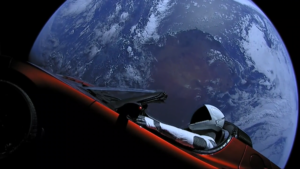Be sure to read past the Cool Science of the Week for your assignments. 🙂
Cool Science of the Week
We’ve had an abnormally cold, drizzly, snowy, frosty, cloudy April. (YES!) Does this mean “global warming” is a hoax? The answer is that even though localized weather may be unseasonably cold, global climate is a different matter. The graph below from NASA shows greenhouse gas levels over the last 400,000 years – amazing! (Really look at that graph and take it in.) Rising ocean levels, acidification of our water supply, and extreme weather are among the consequences scientists say we’ll face due to climate change. In the Midwest, NASA predicts “Extreme heat, heavy downpours and flooding will affect infrastructure, health, agriculture, forestry, transportation, air and water quality, and more. Climate change will also exacerbate a range of risks to the Great Lakes [water supply.]” Geologists and environmental experts are considering renaming our current epoch the “antrhopocene” (anthro meaning human), calling this an era during which humans are the main cause of changes to Earth and its species.
![This graph, based on the comparison of atmospheric samples contained in ice cores and more recent direct measurements, provides evidence that atmospheric CO2 has increased since the Industrial Revolution. (Source: [[LINK||http://www.ncdc.noaa.gov/paleo/icecore/||NOAA]])](https://climate.nasa.gov/system/content_pages/main_images/203_co2-graph-021116.jpeg)
This Week in Physics
With the exception of first period, everyone will take a quiz over eletrostatics goal set 2 on Monday. Also for Monday please take notes on PODCAST 3: Electric Fields. We will go over this, do assignment 3, perform an awesome experiment, and take a quiz over goal set 3 by the end of the week. If announced, please take notes on PODCAST 4: Electric Potential Energy, Electric Potential, and Potential Difference. Expect our unit test next week. 🙂 🙂 🙂

.jpg)








